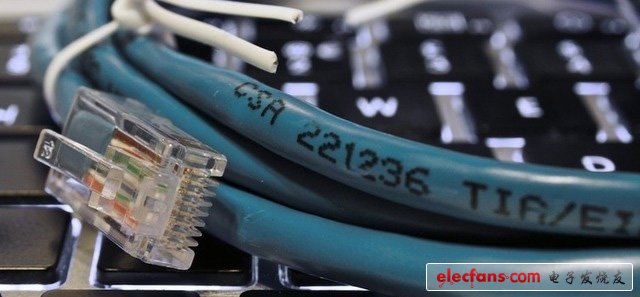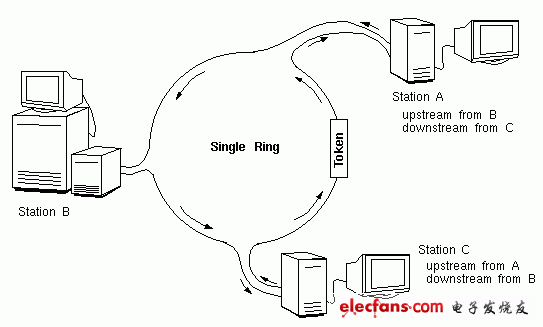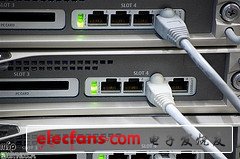In the 1970s, although TV, a laggard and rudimentary media, prevailed, it was not so pale that it completely lacked the color of modern communication systems. Indeed, the most advanced ARPA (The Advanced Research Projects Agency Network, the world ’s first packet-switched network operated by the US Department of Defense ’s Advanced Research Projects Agency, the ancestor of the global Internet) had a modem speed of only 50 Kbps, and the volume is as large as a refrigerator; as for the widely spread Bell 103 modem, its transmission speed is only a pitiful 300 bits per second. Fortunately, with the increase in the total number of computers, long-distance digital communications have become quite popular. Terminals can also be connected to large computers or microcomputers through relatively short simple lines or more complex multipoint systems.

These are all sesame seeds. The real new thing in the 1970s was the local area network (LAN). How does it connect all computers?
The highlight of the LAN is that it can connect more than two computer systems. Therefore, a simple single-line bidirectional transmission line is not enough. In theory, the star, ring, and bus topology can connect thousands of computers into a local area network. The star bus topology connects each computer to several central nodes, which obviously can meet this requirement. The bus topology is composed of only one long cable, and the computers are arranged along the cable. In the ring topology, a cable connects a computer and connects them end to end to form a complete ring structure.

Pic: Topology
In practice, things are far from theoretically simple. Token Ring (Token Ring) is a local area network technology that uses a star topology. But this cannot be seen from the way the cables are connected, because all computers are connected to the central monitoring system (similar to today's Ethernet switches). But these lines do form a ring structure. Token Ring uses a complex token delivery system to determine which computer and when to send data packets. A token circulates in the ring structure, and the computer holding the token is responsible for sending out the information. The token bus uses a physical bus topology, but at the same time there is a token passing scheme that is used to determine the access rights of each computer to the bus. Due to its complexity, the token network appears weak in the face of many types of failures. However, this network form does have the advantage of "predictable operating effect". The operating effect of the network can be accurately calculated in advance to know this, which is of great significance in some applications.

Pic: Token Ring
But the last laugh in the LAN standardization war was Ethernet. Lobbying officials in standardization organizations, while advocating their own smart, concise, low-cost implementation of the design, is the killer of Ethernet. Ethernet unremittingly explores and absorbs higher-speed network transmission protocols and uses their technical advantages for their own purposes, making this network standardization battle increasingly losing its suspense. Decades later, Ethernet finally unified.
If you have ever noticed the protruding network cable behind your computer's butt, wondering where Ethernet started, how far it ran, and how it works, you don't have to scratch your head. And listen to me slowly.

Xerox PARC presents to you
Ethernet was invented by Bob Metcalfe and other Xerox Palo Alto Research Center (PARC) employees in the mid-1970s. PARC's experiment uses an Ethernet network speed of 3Mbps. "This data transmission speed is slower than the computer accessing the main memory, but it is enough." Due to the considerable network speed, data packets are not delayed on the Ethernet interface. The name "Ethernet" comes from "Light Ethernet", a fictional concept that was once considered to be an electromagnetic wave transmission medium (just as the transmission medium of sound waves is air).
The CAT6A 10Gig UTP modular jacks provide transmission performance beyond 500MHz and Alien Crosstalk requirements exceeding the industry standards set by ANSI/TIA-568-C.2 for supporting the operation of 10Gig Ethernet applications (10GBASE-T). It is designed with a shielded termination cap which minimizes additional AXT from neighboring connectors. It also features twisted pair separation posts which minimize the untwisting of pairs to allow for efficient installation and long-term peak performance. The modular jacks are also backward compatible supporting current CAT6, CAT5e, and voice network applications.
CAT6A Keystone Jack,Keystone Jack CAT6A,Cat6a Jack,Keystone 6a
NINGBO UONICORE ELECTRONICS CO., LTD , https://www.uniconmelectronics.com